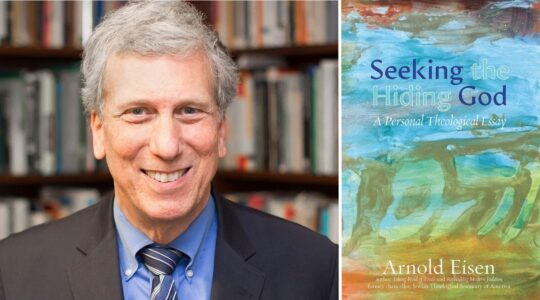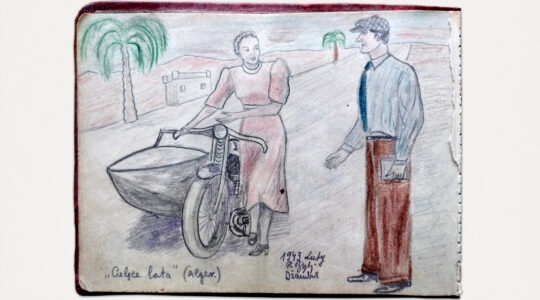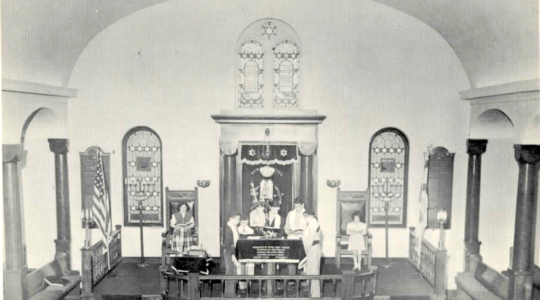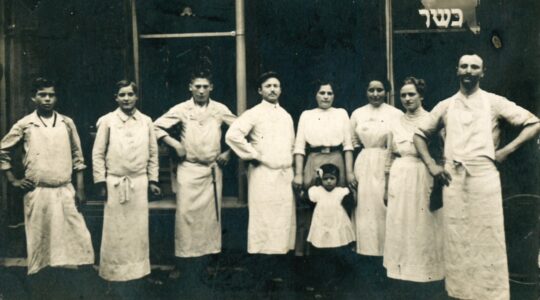The shame intensified last weekend. Two generations in one Palestinian family have now been buried, following what seems to have been a rampage of Jewish extremists.
A little more than a week after an arson attack in the West Bank left his 18-month-old son dead, Saad Dawabsha succumbed to his wounds on Saturday. Two other family members remain in hospital, and Israel has arrested several settlers in raids, in the hope of solving the crime.
Meanwhile, the family of a young woman killed in a stabbing attack perpetrated by an ultra-Orthodox man at Jerusalem’s Pride parade is mourning her death.
Israel resounds with condemnation of these two recent horrific attacks and the fact that they appear to have been perpetrated by Jews. Until the next big news story.
The Israeli news agenda moves quickly. But when a mutation of Zionism, the ideology that founded the state, has left a Palestinian child and his father killed by an arson attack, and a corruption of Judaism has left a teenager dead from stab wounds, the issues raised are too important to fade.
The graves of 18-month-old Ali Dawabsha, 36-year-old Saad Dawabsha, and 16-year-old Shira Banki represent a source of national shame. And it’s time to ensure that this shame, and the shame of other cases of Jewish ideological violence that briefly come to mind at such times, are remembered long after last week’s newspapers are recycled.
In less than three months, Israel will mark the anniversary of the assassination, by a Jewish zealot, of Prime Minister Yitzchak Rabin. It will be the 20th anniversary, meaning that today only people approaching middle age actually remember that terrible crime. To others, this official memorial day (12th of Cheshvan, Nov. 5 this year) is a day of history. Recent history, but history nonetheless. History — when the same cancer that led to Rabin’s killing is rife today.
The three recent killings should act as a prompt to transform Rabin’s anniversary into an annual day for reflection on the dangers of Jewish ideological violence. This would be loyal to the memory of Rabin, whose life was taken by misguided zealotry, but also update the commemoration, and expand it to centralize concerns about more recent attacks in its message.
There should be no euphemisms, no sugar-coating. It shouldn’t be a “democracy day,” a “civics day,” or a “peaceful conduct day,” but rather a “day for the commemoration and condemnation of Jewish ideological violence.”
There will be those who say that this is unnecessary self-flagellation, as Jewish ideological violence pales in occurrence alongside Arab violence. To them I would respond that with the privilege of Jewish statehood comes the responsibility to safeguard our moral character, irrelevant of whatever is going on around us, no matter how others are conducting themselves.
There will be those who say that this is out of all proportion as Jewish ideological violence is still a limited phenomenon. To them I would respond — it’s not as unusual as you think if you count attacks that don’t result in serious harm, but presuming it is indeed limited, let us keep it this way, and any initiative to do so is welcome.
Support the New York Jewish Week
Our nonprofit newsroom depends on readers like you. Make a donation now to support independent Jewish journalism in New York.
There will be those who say that this will be an invitation for Israel’s detractors to focus on the bad that Israelis have done. To them, I would respond that enshrining national condemnation of extremism should do the opposite — after all, which other countries in Israel’s region have such days?
Israel needs to confront the subject of ideological violence in space, as well as time. The Israeli educational curriculum focuses heavily on trips and sites, using them (legitimately) to nurture connections between students and their history and country. The educational establishment is constantly aware of the consciousness-shaping role that these trips play with pupils, pressing buttons that classroom learning doesn’t. This potential of trips should be harnessed in the fight against ideological violence.
The state should establish a museum that focuses on Jewish extremism. It should have exhibits on incidences of violent extremism. There should be displays on each serious attack or killing, with details on the victims or the site that has been vandalized.
Architecturally, it should be in a large area — perhaps a massive indoor garden, a place of great beauty that it suitable (and comfortable) for visiting all year round. The displays would be confined to a relatively small space, but this space will expand, destroying the area of beauty every time there is another attack and more space is needed for displays. If indeed there are more attacks and the display area does expand, photographs of the museum year by year should show the display area expanding and the area of beauty shrinking.
And so, it would be a museum that puts its future in the hands of its visitors. If young Israelis can ensure that Jewish extremism is consigned to history without gaining major traction, it will be primarily a place of beauty. But if its warning isn’t heeded, it will become something else, destroying what is built, foreshadowing the destruction that violent extremism can wreak on Israel as a whole.
Nathan Jeffay’s column appears twice a month.
The New York Jewish Week brings you the stories behind the headlines, keeping you connected to Jewish life in New York. Help sustain the reporting you trust by donating today.




